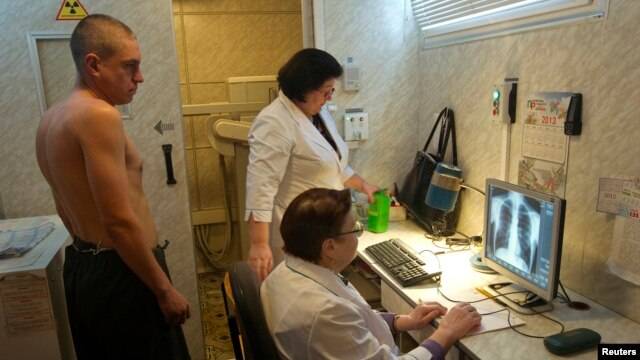R
rdean
Guest
State rushes closure of its only TB hospital in Lantana
Had they seen the letter, decision makers would have learned that 3,000 people in the past two years may have had close contact with contagious people at Jacksonvilles homeless shelters, an outpatient mental health clinic and area jails. Yet only 253 people had been found and evaluated for TB infection, meaning Floridas outbreak was, and is, far from contained.
The public was not to learn anything until early June, even though the same strain was appearing in other parts of the state, including Miami.
Worst TB outbreak in 20 years kept secret | www.palmbeachpost.com
Deadly Tuberculosis Outbreak In Florida Covered Up By GOP Governor Rick Scott

Of course, the cost to treat a TB patient early is typically $500, however if prolonged, drug resistant TB strains which do develop can cost hundreds of thousands of dollars. And once those appear, the diseases contagious nature make it sure to spread rapidly, especially in areas effected by the layoffs for water treatment plants. So much for austerity.
And, as the Palm Beach Post reported, it appeared that the Governor had been actively hiding the CDC report from lawmakers just before they ordered the closing of the states sole TB treatment center. Despite the confirmed deaths by TB and thousands exposed to the disease, the Governor felt that saving a few hundred dollars per patient was worth the looming crisis in the state. Now it appears that containment of the disease is no longer an option, and with TB being incredibly contagious, called Consumption for those who recall the works of Charles Dickens, the danger to the state looms large.
---------------------------------------------------------------------
What is it these people don't understand? It's more important to give tax breaks to billionaires than worry about a few thousand "little people". Let 'em die!
Had they seen the letter, decision makers would have learned that 3,000 people in the past two years may have had close contact with contagious people at Jacksonvilles homeless shelters, an outpatient mental health clinic and area jails. Yet only 253 people had been found and evaluated for TB infection, meaning Floridas outbreak was, and is, far from contained.
The public was not to learn anything until early June, even though the same strain was appearing in other parts of the state, including Miami.
Worst TB outbreak in 20 years kept secret | www.palmbeachpost.com
Deadly Tuberculosis Outbreak In Florida Covered Up By GOP Governor Rick Scott

Of course, the cost to treat a TB patient early is typically $500, however if prolonged, drug resistant TB strains which do develop can cost hundreds of thousands of dollars. And once those appear, the diseases contagious nature make it sure to spread rapidly, especially in areas effected by the layoffs for water treatment plants. So much for austerity.
And, as the Palm Beach Post reported, it appeared that the Governor had been actively hiding the CDC report from lawmakers just before they ordered the closing of the states sole TB treatment center. Despite the confirmed deaths by TB and thousands exposed to the disease, the Governor felt that saving a few hundred dollars per patient was worth the looming crisis in the state. Now it appears that containment of the disease is no longer an option, and with TB being incredibly contagious, called Consumption for those who recall the works of Charles Dickens, the danger to the state looms large.
---------------------------------------------------------------------
What is it these people don't understand? It's more important to give tax breaks to billionaires than worry about a few thousand "little people". Let 'em die!



